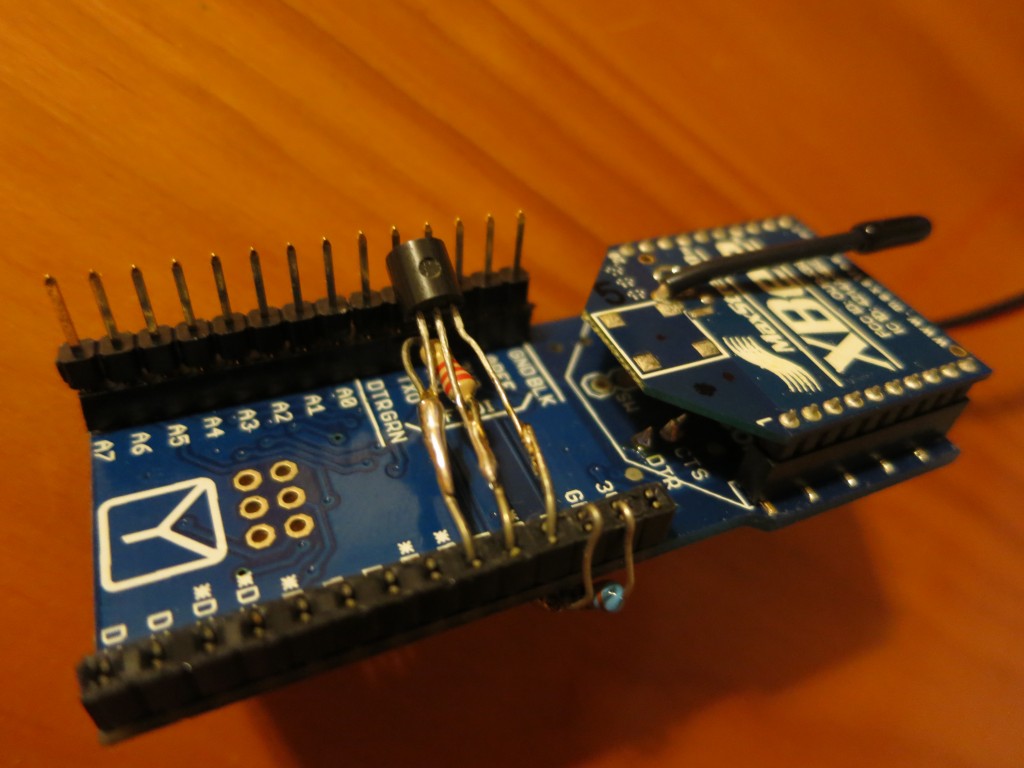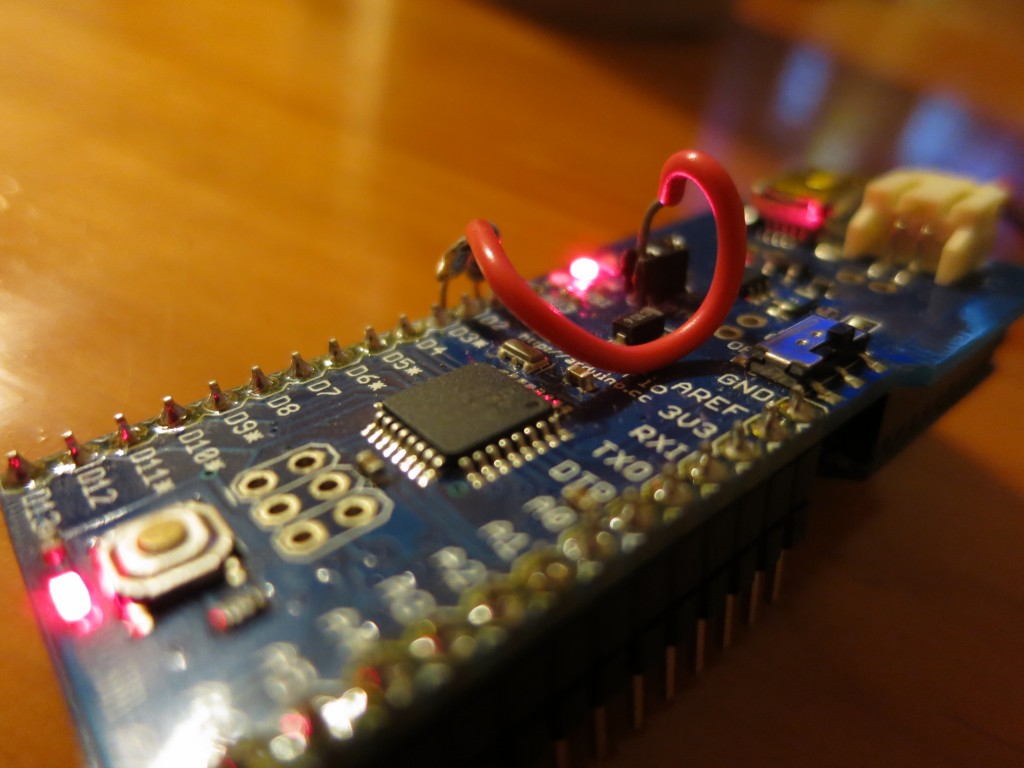We have a Arduino Fio temperature logger, so now maybe we can increase the accuracy by adding an external temperature sensor. I have a couple of DS18B20 Programmable Resolution 1-Wire Digital Thermometers, so I thought, heck, let’s try one out!
These temperature sensors are much more accurate out-of-the-box, so I don’t need to deal with calibration (which I did need to worry about with the internal thermometer). In addition, using separate, discrete components allows for the possibility of putting temperature sensors directly on/in whatever you may want to measure (rather than merely measuring the ambient temperature) and the potential for multiple temperature sensors with a single Arduino Fio (which are available at Amazon.com).



 Having a
Having a  I’ve wanted to make a remote control
I’ve wanted to make a remote control  I wanted to make a wireless serial link that would allow me to send and receive data between Microchip PIC microcontrollers and a computer. I found some very useful information and some helpful code for utilizing a Laipac TRW-24G 2.4GHz wireless transceiver with a
I wanted to make a wireless serial link that would allow me to send and receive data between Microchip PIC microcontrollers and a computer. I found some very useful information and some helpful code for utilizing a Laipac TRW-24G 2.4GHz wireless transceiver with a